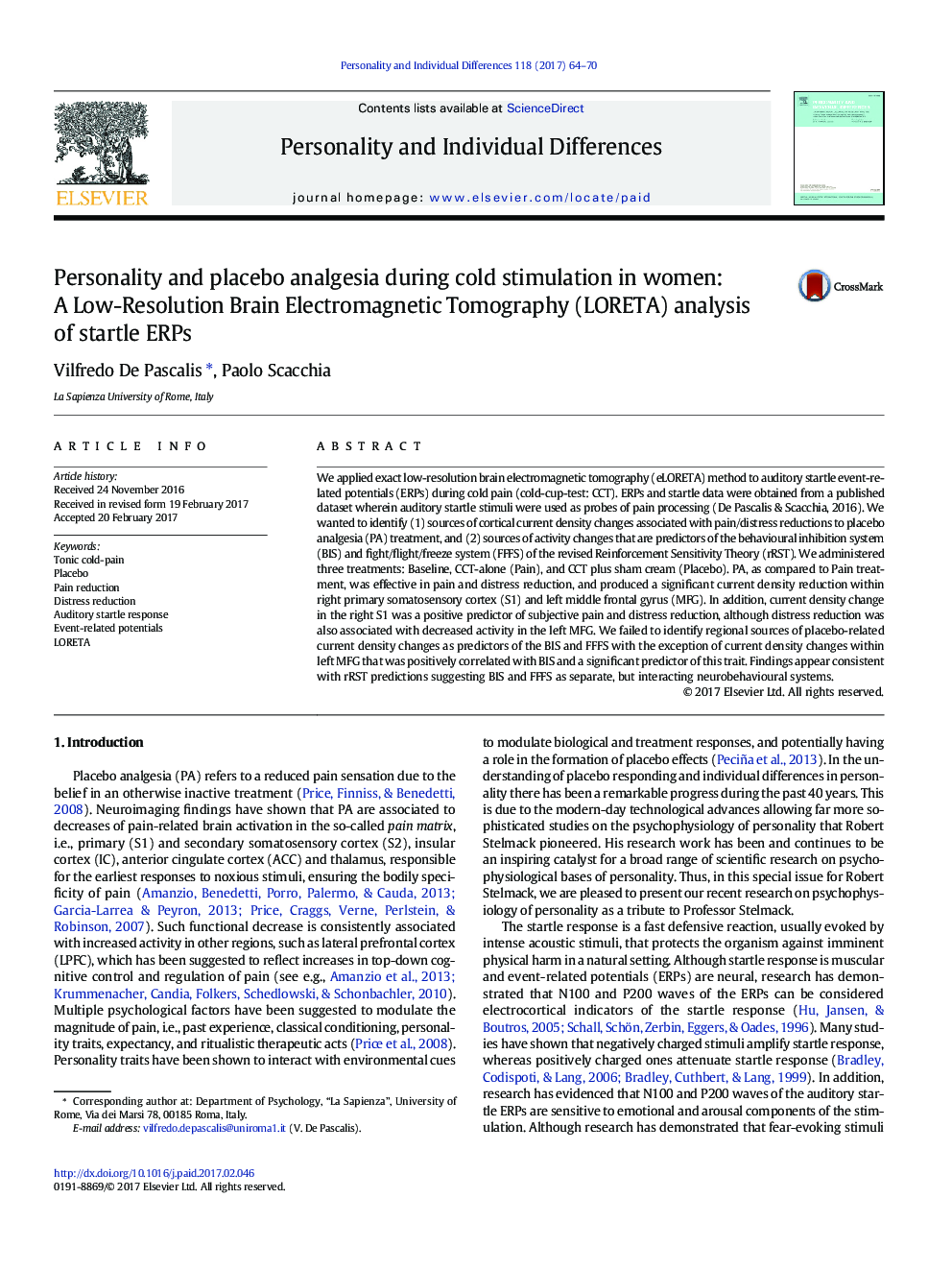| Article ID | Journal | Published Year | Pages | File Type |
|---|---|---|---|---|
| 5035570 | Personality and Individual Differences | 2017 | 7 Pages |
Abstract
We applied exact low-resolution brain electromagnetic tomography (eLORETA) method to auditory startle event-related potentials (ERPs) during cold pain (cold-cup-test: CCT). ERPs and startle data were obtained from a published dataset wherein auditory startle stimuli were used as probes of pain processing (De Pascalis & Scacchia, 2016). We wanted to identify (1) sources of cortical current density changes associated with pain/distress reductions to placebo analgesia (PA) treatment, and (2) sources of activity changes that are predictors of the behavioural inhibition system (BIS) and fight/flight/freeze system (FFFS) of the revised Reinforcement Sensitivity Theory (rRST). We administered three treatments: Baseline, CCT-alone (Pain), and CCT plus sham cream (Placebo). PA, as compared to Pain treatment, was effective in pain and distress reduction, and produced a significant current density reduction within right primary somatosensory cortex (S1) and left middle frontal gyrus (MFG). In addition, current density change in the right S1 was a positive predictor of subjective pain and distress reduction, although distress reduction was also associated with decreased activity in the left MFG. We failed to identify regional sources of placebo-related current density changes as predictors of the BIS and FFFS with the exception of current density changes within left MFG that was positively correlated with BIS and a significant predictor of this trait. Findings appear consistent with rRST predictions suggesting BIS and FFFS as separate, but interacting neurobehavioural systems.
Related Topics
Life Sciences
Neuroscience
Behavioral Neuroscience
Authors
Vilfredo De Pascalis, Paolo Scacchia,
